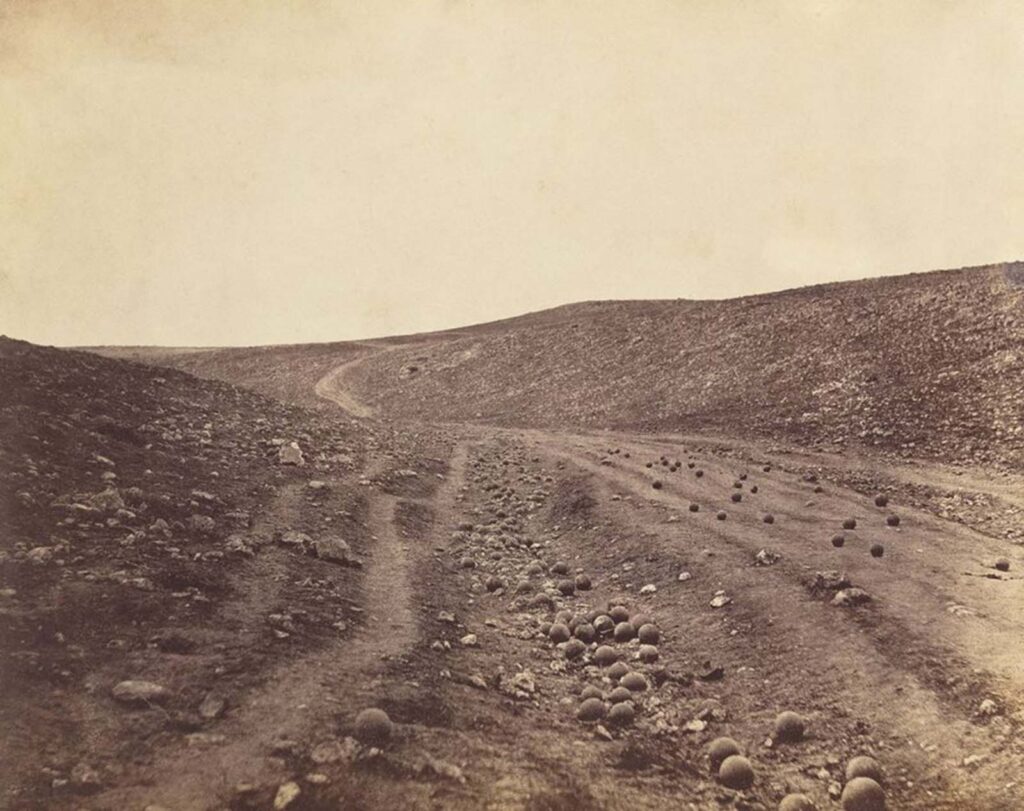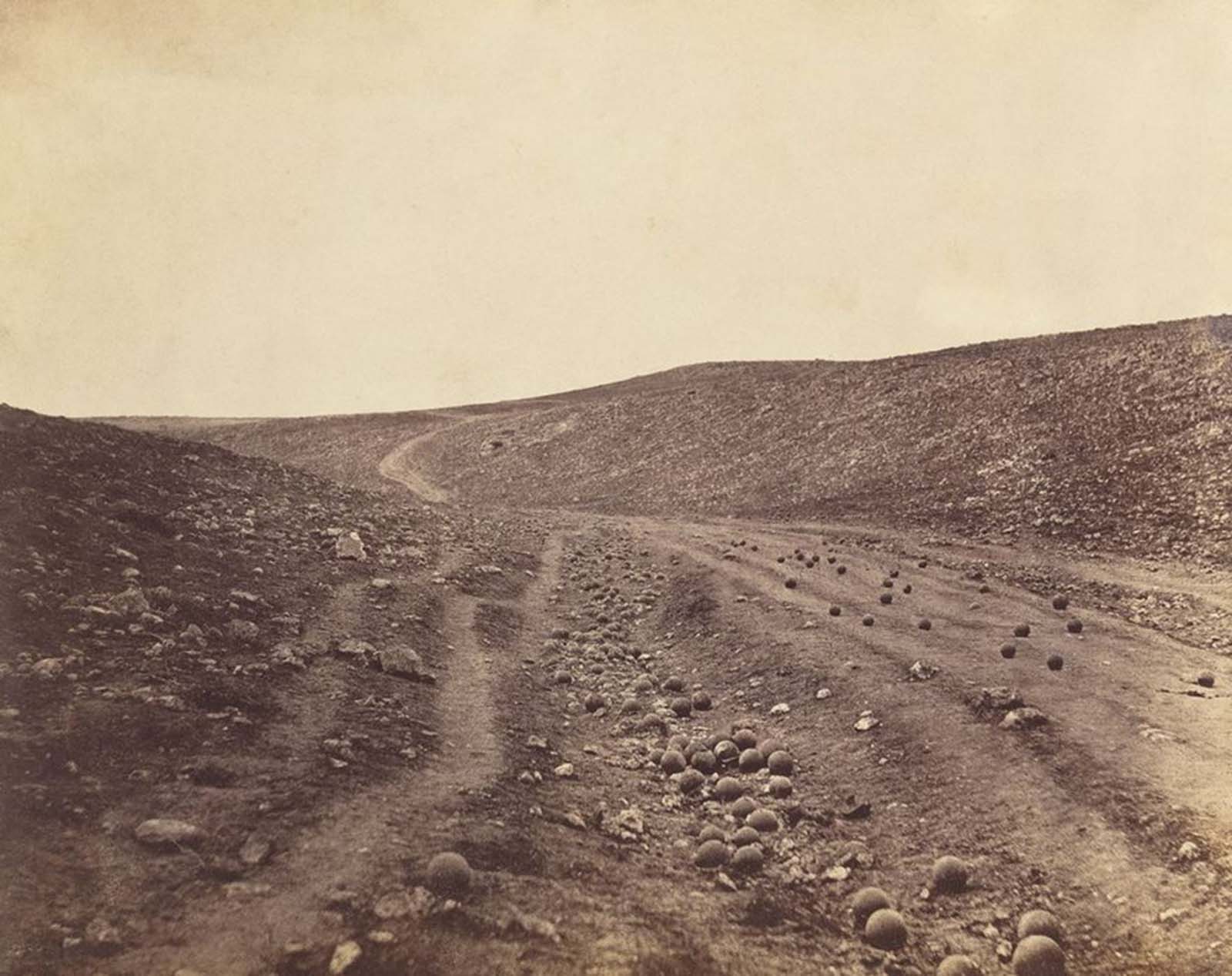

While little is remembered of the Crimean War—that nearly three-year conflict that pitted England, France, Turkey and Sardinia-Piedmont against Russia—coverage of it radically changed the way we view war. Until then, the general public learned of battles through heroic paintings and illustrations.
But after the British photographer Roger Fenton landed in 1855 on that far-off peninsula on the Black Sea, he sent back revelatory views of the conflict that firmly established the tradition of war photography.
Those 360 photos of camp life and men manning mortar batteries may lack the visceral brutality we have since become accustomed to, yet Fenton’s work showed that this new artistic medium could rival the fine arts.
This is especially clear in The Valley of the Shadow of Death, which shows a cannonball-strewn gully not far from the spot immortalized in Alfred, Lord Tennyson’s “The Charge of the Light Brigade.”
That haunting image, which for many evokes the poem’s “Cannon to right of them,/ Cannon to left of them,/ Cannon in front of them” as the troops race “into the valley of Death,” also revealed to the general public the reality of the lifeless desolation left in the wake of senseless slaughter.
Scholars long believed that this was Fenton’s only image of the valley. But a second version with fewer of the scattered projectiles turned up in 1981, fueling a fierce debate over which came first.
That the more recently discovered picture is thought to be the first indicates that Fenton may have been one of the earliest to stage a news photograph.